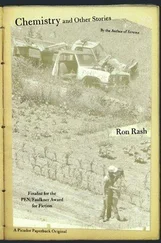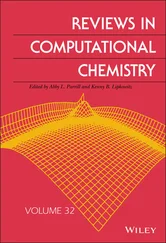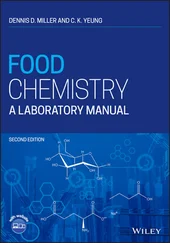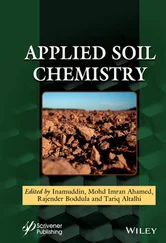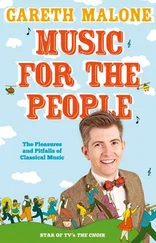My philosophy for the third edition of Bioinorganic Chemistry: A Short Course remains the same as that for the first two. Introduce inorganic chemistry and biochemistry basics ( Chapter 1), and then move on to several topics presented in some detail. My goal is not to cover the whole, enormous, bioinorganic chemistry spectrum but to focus on a small number of metalloproteins and metalloenzymes ( Chapters 3and 4). Bioinorganic chemists need experimental and analytical methods: computers, computing, where to find information online ( Chapter 2); cryo‐electron microscopy ( Chapter 3); and other microscopy methods ( Chapter 5). New areas of interest for me – nanobioinorganic chemistry and nanomedicine – are the subject of Chapter 5. Chapter 6, Metals in Medicine, updates a major area of continuing interest to me – metal‐containing anticancer compounds – and looks at a number of metal‐affected disease states.
In this book, structure/function relationships are emphasized for all metalloproteins and metalloenzymes with visualizations made possible using PyMOL and ChemDraw software, specifically the PyMOL Molecular Graphics System, Version 2.1.1, https://pymol.organd ChemDraw Prime 16.0.1.4 http://www.perkinelmer.com/category/chemdraw. I rely on up‐to‐date primary sources for all subject areas and anticipate readers will do the same. Science moves forward very quickly in bioinorganic chemistry and the way to keep up is to follow the current scientific literature.
Everyone interested in bioinorganic chemistry should be aware of the very extensive and helpful glossary of bioinorganic terminology published by the International Union of Pure and Applied Chemistry (IUPAC) available at https://old.iupac.org/publications/pac/1997/pdf/6906x1251.pdf.
What should we think or do about scientific ethics? A large number of scientists signed on to commentary on the subject of genome editing in Nature magazine in March 2019. The comment “Adopt a moratorium on heritable genome editing” appeared in the Comment section of Nature 567: 165–168. The comment's first sentence specifically states that changing heritable DNA in sperm, eggs, or embryos to make genetically modified children should undergo a global moratorium. Ethical questions about heritable genome editing are addressed in Section and in a question at the end of Chapter 1. All scientists should carry out their work in an ethical manner although the exact meaning of the term “ethical manner” is not always clear. We know not to falsify data or steal another's work. How we behave when discoveries make it possible to cure disease (good?) or change the genome of a future generation (bad?) are much thornier questions.
What should we think or do about errors? Errors creep in. Websites contain errors. Scientific publications contain errors – sometimes corrected, sometimes not. When learning a new subject and head scratching over an un‐understandable statement, label, or answer to a question, think about the possibility of an error. Protein data bank (PDB) accession numbers that identify molecules that have had their structures determined by X‐ray crystallography or nuclear magnetic resonance spectroscopy are a good example. Numbers and/or letters get transposed. The PDB code 1A3N will bring up data for the structure of deoxy human hemoglobin if you put that code in the search box at https://www.rcsb.org. Put in 1N3A and you will get data for human 8‐oxoguanine glycosylase. Some letters and numbers are unclear. The letter “O” is used instead of the number “0”. Or the letter “I” instead of the number “1.” There are errors in this book. I hope you will find them and report them to me at rosetteroat@gmail.com.
What should we think or do about et al.? Scientific papers often have numerous co‐authors. Normal practice for writing the reference after the third author is to add the Latin phrase “et al.” meaning “and others.” For a publication with six authors, who should be listed and who should be et al.? My practice has been to find the paper's corresponding author assuming that person would respond to a question about the research. Sometimes I know who the person heading the research is – head of laboratory, prominent scientist – and I include that person. This practice may leave out the person(s) who actually conducted the research. I don't think that is a fair practice but I don't have a solution. If you do let me know.
The cover illustration shows the active site of the nitrite reductase enzyme discussed in Section 4.4.3.2 and is illustrated further in Figure 4.26.
The text is accompanied by a website with address:
www.wiley.com/go/Roat‐Malone_Bioinorganic Chemistry
ROSETTE M. ROAT-MALONE
Washington College
1 1. Bren, K.L., Eisenberg, R., Gray, H.B. (2015) Discovery of the magnetic behavior of hemoglobin: a beginning of bioinorganic chemistry Proc. Natl. Acad. Sci. U S A. 112(43): 13123–13127. doi: 10.1073/pnas.1515704112
2 2. (a) Pauling, L. and Coryell, C.D. (1936). The magnetic properties and structure of the hemochromogens and related substances. Proc. Natl. Acad. Sci. USA 22 (3): 159–163.(b) Pauling, L. and Coryell, C.D. (1936). The magnetic properties and structure of hemoglobin, oxyhemoglobin and carbonmonoxyhemoglobin. Proc. Natl. Acad. Sci. USA 22 (4): 210–216.
3 3. Hay, R.W. (1984). Bio‐inorganic Chemistry. Sydney Australia: Halstead Press.
4 4. Lippard, S.J. and Berg, J.M. (1994). Principles of Bioinorganic Chemistry. Mill Valley, CA: University Science Books.
5 5. Bertini, I., Gray, H.B., Stiefel, E.I., and Valentine, J.S. (2007). Biological Inorganic Chemistry Structure and Reactivity. Sausalito CA: University Science Books.
All writers know their finished product would not be possible without the assistance of many others. Family time declines – I thank especially my long‐suffering spouse Michael Malone for shopping, cooking, cleaning, and infinite patience. Editors cope with missed deadlines and changes to submitted materials – I thank Wiley Senior Editor Jonathan Rose, Project Editor Aruna Pragasam, and Production Editor Gayathree Sekar. Colleagues at Washington College assist this retired professor with online access to library materials as well as communication and chemistry software. Colleagues in chemistry offer publications and information. Nicholas Farrell contributed publications and information on phosphate clamps as a third mode of DNA binding with polynuclear platinum complexes as well as published materials on the interactions of platinum anticancer complexes with glycans (Section 6.1.5). Yaorong Zheng contributed current publications and information on self‐assembly of platinum(IV) prodrugs and nanoparticle metal organic cage encapsulation of platinum anticancer agents (Sections 5.5.4.2 and 6.1.9.2). Matthew Kieber–Emmons answered questions on computational chemistry (Sections 2.5.3.4 and 2.6). Sincere thanks to those mentioned here and the many unnamed others who contributed their expertise.
Figures in this book that are not reproductions from credited publications have been drawn using the software: PyMOL Molecular Graphics System, Version 2.1.1, https://pymol.organd ChemDraw Prime 16.0.1.4 http://www.perkinelmer.com/category/chemdraw.
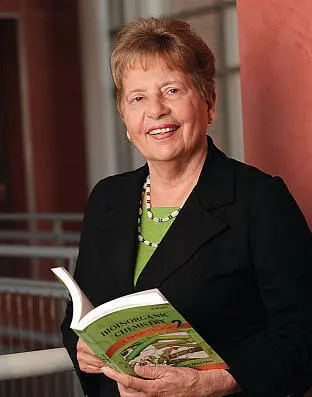
Rosette M. Roat‐Malonegraduated Phi Beta Kappa from the University of Pennsylvania in 1961 with a Bachelor of Science degree in Chemistry. Following years in and out of academia, she received her PhD in Chemistry from the University of Delaware in 1984. She was appointed Professor of Chemistry at Washington College, a primarily undergraduate institution in Chestertown MD, in 1994. Her research in the chemistry of platinum(IV) compounds as anticancer agents led to support from federal and private funding agencies and research appointments at several universities. Since becoming Professor of Chemistry Emerita at Washington College, she has authored bioinorganic texts and encyclopedic entries.
Читать дальше


